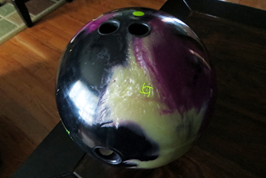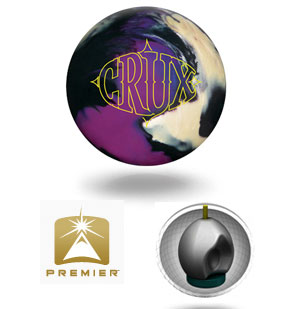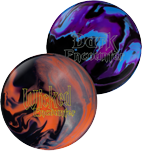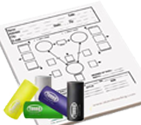
CRUX™
Review Date: 10 October 2014
Reviewed by:
Storm/Roto Grip staffer John Brockland
Style: Stroker Rev Rate: 280-310
PAP: 5.25" over and 1" up
Inside and out the CRUX is a brand new development in Storm's Premier Line. Its engine is the Catalyst™ core—a design that has been seven years in the making. Here is the link to a video on which Research & Development Director, Victor Marion, explains much of the thought process behind this new engine. https://www.youtube.com/watch?v=s9QSgVyO-N4&feature=youtu.be
Storm says, "its dynamic asymmetrical design will help you create more angle through the pocket…Think Jason Belmonte or Pete Weber's pin-action."
Well, in addition to death and taxes another certainty is that no bowling ball will never turn me or any other bowler into Belmonte or PDW! Short of that, though, the genius of this Catalyst core wowed me the first time out of the box. In the video link above, Victor Marion talks about trying to create a core that would be as forgiving as possible especially on shots when a bowler might turn it a little early and get a little thumb down at the release point. They've achieved this with the unique cavity design carved out of the side of the core so that in any layout the drilling of the thumbhole has minimal effect on the densest part of the weight block. I get a little foggy trying to absorb all the technical lingo about the migration of RG planes in this new design, but I will say that however they accomplished it the CRUX is perhaps the best rolling higher (for my taste) RG asymmetrical ball I've ever had.
The cover stock on the CRUX is also a first - a hybrid version of the ERG coverstock technology which was released as a solid on the ZERO GRAVITY and as a pearl on the BYTE and the LUCID. I was never a big fan of the BYTE or the LUCID and have had hit and miss success getting the ZERO GRAVITY through the pins very well. This hybrid cover seems to put the best of everything on the lane regarding ERG technology.
For a layout on my CRUX I went with something that I thought would enhance the angularity that was supposed to be its hallmark characteristic. The pin is above the bridge with a decently strong drilling angle. The numbers come to 55 x 5 x 35. To give the ball a fair fight of a test run in the hooking house shot environs we have here in STL, I applied a wet 4000-grit abralon pad over the matte 3000-grit box finish.
The first outing with the CRUX was in the third game of league on a transitioned hooking house shot that still had plenty of oil in the middle of the lane. I had been using an OUTCRY for the first two games playing up the track and the transition had force me deep enough into the puddle in the center of the lane that the weaker core in the OUTCRY just wasn't cornering enough to carry. Fortunately the first shot with the CRUX was in the 11th at the end of the second game because I completely underestimated how big a difference there was going to be! After a 9 and 5 move left, the CRUX ran off the front nine the third game before a stoned 8-pin stopped the fun.
What has really impressed me, though, is what great midlane the CRUX has shown me during this second quarter of our STL Fall Sport League on the 1.3 to 1, heavy volume, 46-foot Mark Roth pattern. This is in a center with really hard-surfaced original Pro-anvilane. While most of my other heavy volume equipment still has a tendency to skid too much through the tight midlane (especially on a shot that's missed a little at the bottom or that's a bit firm) the CRUX picks up some good heavy roll and creates more mistake room at the end of the pattern than anything else in my bag. I can get to the pocket consistently enough with a few other balls, but none of them create the entry angle that the CRUX does.
Randy Pedersen says "this ball will hook on ice and then come back and laugh at you…Let me just say this: if you don't have a CRUX, well…how does it feel to finish second!?" Based on what I've seen - that ain't just a color commentator making nice noise!!!
 
|
|




